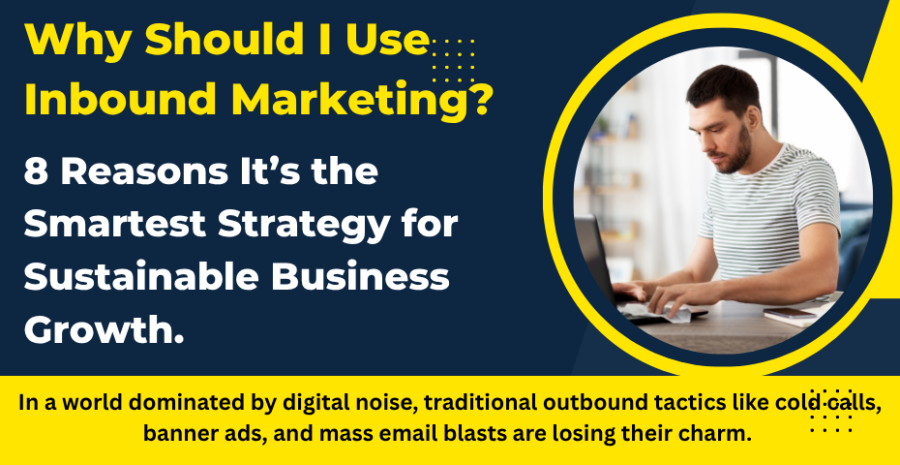Introduction: The Modern Marketing Shift Every Business Must Embrace
In a world dominated by digital noise, traditional outbound tactics like cold calls, banner ads, and mass email blasts are losing their charm. Consumers are no longer passive recipients of marketing—they are active seekers of information.
They Google before they buy, read reviews, follow brands, and engage with content that resonates. This seismic shift in consumer behavior has given rise to a powerful strategy: inbound marketing. Unlike its interruptive counterpart, inbound marketing pulls people in through valuable content, meaningful engagement, and personalized experiences.
It’s about being helpful rather than pushy. When you use inbound marketing, you're not just chasing leads; you're building trust, educating prospects, and guiding them through a journey that feels natural and aligned. For businesses in today’s landscape, this is not just smart—it’s essential.
Inbound marketing creates a magnetic brand presence that attracts high-quality leads, nurtures relationships, and turns strangers into lifelong customers. Whether you run a small startup or a scaling enterprise, this approach allows you to compete and connect in a human-centric way.
It’s also cost-effective, measurable, and adaptable—key factors for sustainable growth. But more importantly, it positions your brand as a solution, not just a seller.
Let’s explore 8 powerful reasons why adopting inbound marketing is the best decision you can make for your business today.
1. Attracts High-Quality Leads That Actually Want to Hear from You

One of the biggest pain points in marketing is chasing down cold leads who aren’t ready—or even interested—in what you’re offering.
Inbound marketing flips this script. Instead of pushing messages out to random audiences, it draws in people who are already looking for solutions. Through SEO-optimized blogs, informative videos, lead magnets, and targeted social media content, you attract individuals actively researching topics related to your business.
These aren’t just casual browsers; they’re warm prospects with intent. When someone lands on your content through a Google search or clicks a social media link, it’s a clear signal they’re curious or have a need.
This makes inbound leads far more qualified than those acquired through spray-and-pray tactics. You're not interrupting their day with ads—they’re coming to you.
This higher level of intent translates into better conversion rates, shorter sales cycles, and a more efficient use of your marketing budget. You spend less time convincing and more time closing.
And because you’ve already provided value before asking for a sale, trust is baked into the relationship from the start.
2. Builds Trust and Positions You as a Thought Leader in Your Industry

Today’s buyers are skeptical and self-informed. Before they ever speak to your sales team, they’ve already done their research, compared options, and formed opinions.
This is where inbound marketing shines. By consistently publishing helpful, insightful content—whether it's blogs, videos, infographics, or podcasts—you position your business as an expert and a trusted resource.
Instead of selling to your audience, you're educating them. This makes a massive difference in how they perceive your brand. When you help someone solve a problem or understand a complex topic, you earn their respect and attention.
Over time, this builds a relationship rooted in trust. And in business, trust is the currency that converts browsers into buyers. Your blog might answer the exact question a prospect is Googling.
Your video might clarify a product decision. Your lead magnet might walk them through a strategic process. Each piece of content increases your credibility.
This thought leadership isn’t just good for marketing—it also boosts your brand equity and attracts partnerships, media opportunities, and customer loyalty.
3. Creates Long-Term Value Through Evergreen Content
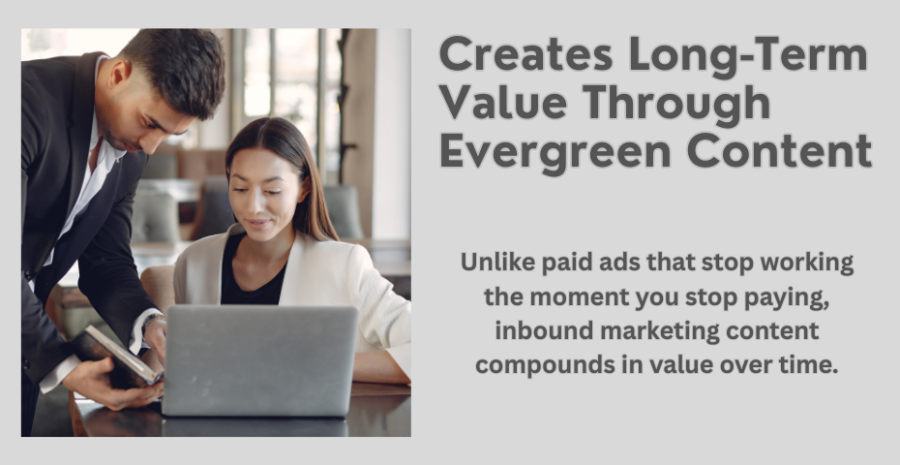
Unlike paid ads that stop working the moment you stop paying, inbound marketing content compounds in value over time. A single blog post can bring in traffic, leads, and sales for years after it’s published—especially if it ranks on Google.
This evergreen effect is one of the most powerful advantages of inbound. By strategically creating content around your audience’s pain points, search queries, and aspirations, you’re building a long-lasting asset. Every blog, guide, or tutorial becomes a digital salesperson working 24/7.
The more content you publish, the larger your digital footprint becomes—and the more traffic and leads you attract without additional cost. This not only reduces your customer acquisition cost but also gives you a consistent source of organic reach.
Think of it like compound interest: the more you invest in high-quality content now, the greater the return over time. And because you own the content, you’re not beholden to algorithm changes or ad budgets.
It’s yours forever—driving value long after the publish date.
4. Aligns Perfectly with the Buyer’s Journey
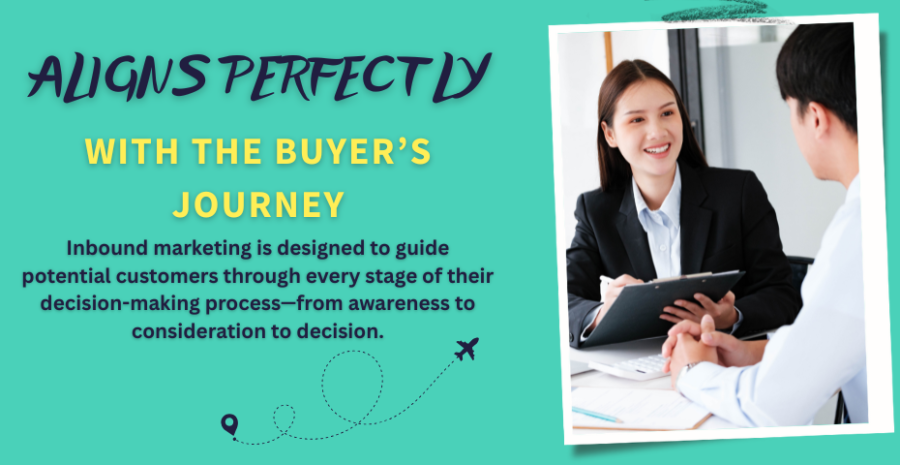
Inbound marketing is designed to guide potential customers through every stage of their decision-making process—from awareness to consideration to decision.
At the top of the funnel, you attract attention with blog posts, social media content, or videos that address common challenges or introduce big ideas.
In the middle of the funnel, you nurture that interest with case studies, webinars, or email sequences that help prospects evaluate solutions.
At the bottom, you present compelling offers, free trials, or demos that drive conversions. This strategic alignment ensures your content is always relevant, timely, and helpful.
You're not just throwing information at people—you’re leading them forward with purpose. This structure builds momentum and reduces friction. Instead of pushing your product, you’re guiding a journey.
When someone arrives at your checkout page or contacts your sales team, they already understand your value and are ready to take action.
That’s the magic of inbound—it feels natural to the customer and efficient for your business.
5. Increases Your Website Traffic and Boosts Search Engine Visibility
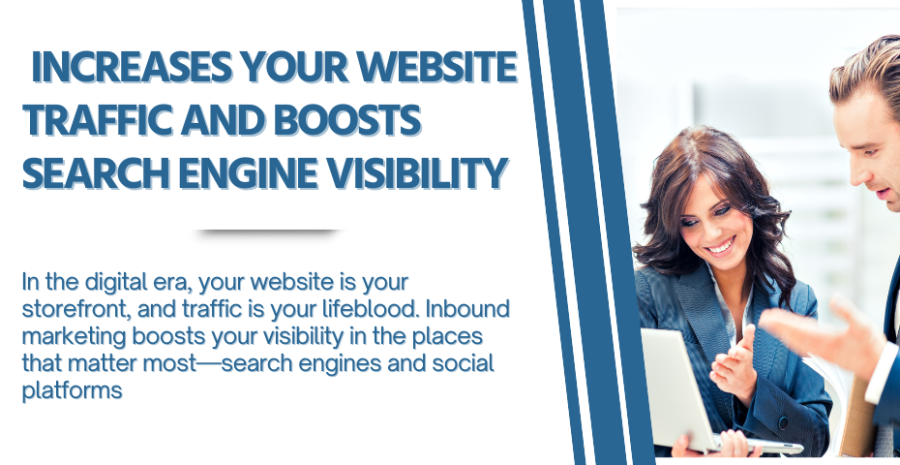
In the digital era, your website is your storefront, and traffic is your lifeblood. Inbound marketing boosts your visibility in the places that matter most—search engines and social platforms.
By optimizing your content for relevant keywords and search intent, your pages show up when potential customers are actively looking for solutions.
This isn’t interruptive marketing—it’s discoverable marketing. Instead of hoping your ad catches someone’s eye, you’re meeting them exactly when they need you.
This is why inbound traffic is often more engaged, more qualified, and more likely to convert. Every piece of content you publish increases your chances of being found. It also improves your domain authority and search rankings over time.
With consistent publishing, you create a digital moat that attracts traffic from multiple sources—Google, YouTube, LinkedIn, Markethive, Twitter, Pinterest, and more. Inbound isn’t just about creating content. It’s about being visible, searchable, and clickable.
When your content ranks and performs, your business becomes discoverable to a larger audience without needing to spend big on ads.
6. Nurtures Leads and Builds Meaningful Relationships Over Time
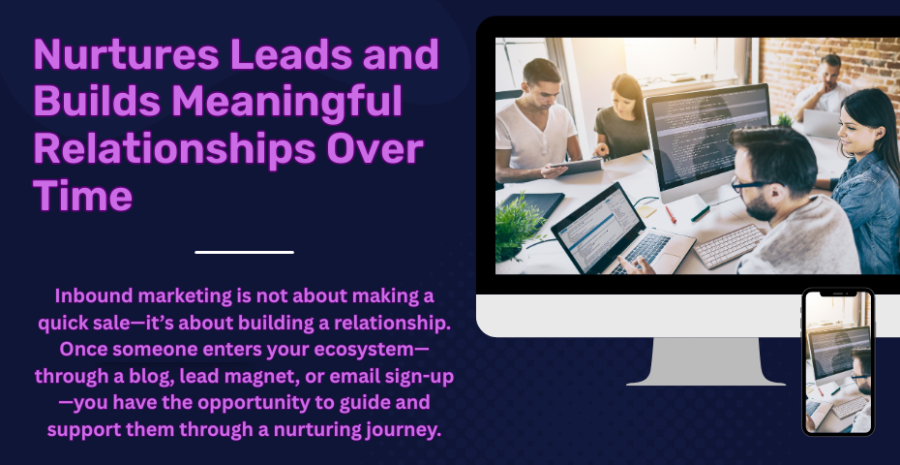
Inbound marketing is not about making a quick sale—it’s about building a relationship. Once someone enters your ecosystem—through a blog, lead magnet, or email sign-up—you have the opportunity to guide and support them through a nurturing journey.
Email sequences, personalized content, retargeting ads, and ongoing education all contribute to deepening this relationship. You’re not pushing a product; you’re adding value consistently.
Over time, this creates loyalty, increases lifetime value, and makes your brand top-of-mind. It also gives your sales team better-qualified leads who understand your offer and trust your brand.
These nurtured leads are far more likely to convert and refer others. The beauty of inbound is that you don’t need to rush the process. You meet people where they are, offer support, and let them move at their own pace.
This respectful, value-driven approach builds goodwill and long-term business relationships.
7. Shortens the Sales Cycle and Improves Conversion Rates
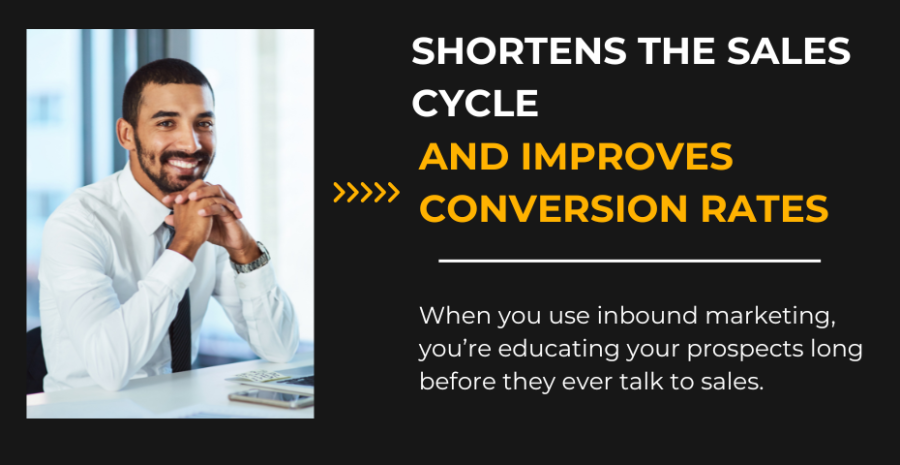
When you use inbound marketing, you’re educating your prospects long before they ever talk to sales. This means by the time they do reach out, they already know what you offer, why it matters, and how it can help them.
This pre-education drastically shortens the sales cycle. Your team doesn’t need to start from scratch—they just need to answer final questions and close the deal.
Inbound leads come warmed up and ready to move. This not only increases efficiency but also improves your close rates. You spend less time convincing and more time serving.
Additionally, because your content is tailored to address objections, highlight benefits, and build trust, it handles much of the heavy lifting. Sales becomes a natural next step rather than a forced push.
And because the prospect initiated the journey by engaging with your content, they feel empowered and in control—leading to higher satisfaction and retention.
8. Delivers Better ROI Than Traditional Outbound Methods
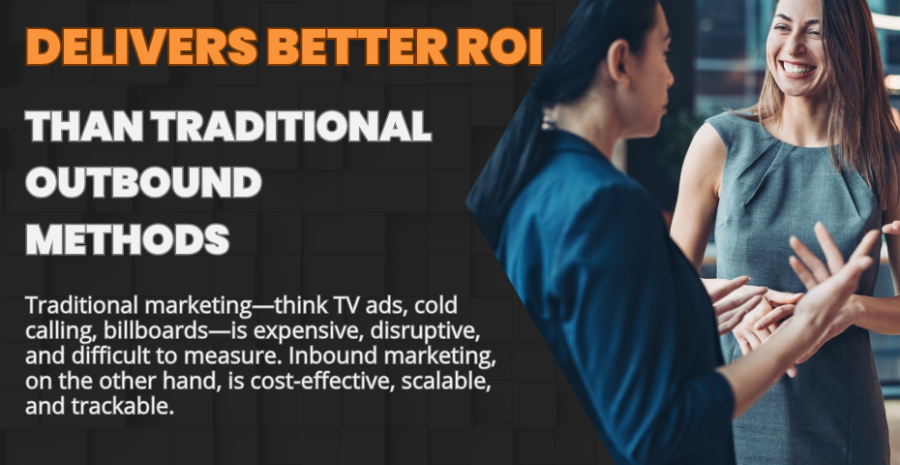
Traditional marketing—think TV ads, cold calling, billboards—is expensive, disruptive, and difficult to measure. Inbound marketing, on the other hand, is cost-effective, scalable, and trackable.
You can see exactly how your blog post performed, which email led to conversions, and how much traffic came from your SEO efforts. This data-driven approach allows you to optimize continuously and double down on what works.
Over time, as your content library grows and ranks, your cost per lead decreases significantly. Unlike outbound campaigns that require constant spending, inbound content keeps delivering results long after you hit publish.
This makes inbound one of the most sustainable and profitable marketing strategies for small and large businesses alike. According to HubSpot, inbound marketing consistently produces higher ROI than outbound tactics—especially for businesses with limited marketing budgets.
You don’t need to outspend your competitors; you just need to out-teach and out-help them.
Conclusion: Inbound Marketing Isn’t Just a Strategy—It’s a Smarter Way to Grow Your Business
In a marketplace where attention is scarce and trust is everything, inbound marketing stands out as the most effective, sustainable, and human-centric way to grow. It aligns perfectly with how people shop, learn, and decide in today’s world. Instead of chasing customers, it draws them in.
Instead of interrupting, it educates. Instead of selling, it supports. The beauty of inbound lies in its compounding nature. Every blog post, video, or email you create adds to a system that attracts, nurtures, and converts. Over time, you build a digital machine that works for you around the clock—generating leads, building trust, and fueling growth.
More importantly, you build something bigger than content. You build a reputation. You become a trusted voice in your space. Whether you're launching a startup, scaling a business, or growing a personal brand, inbound marketing gives you the tools, framework, and philosophy to succeed in the long run.
It’s not a quick fix—it’s a strategic foundation. So if you're asking, “Why should I use inbound marketing?”
The real question is—can you afford not to?
Your time to thrive is now. One step at a time.
.jpg)
About: Andries vanTonder (66)
Over 46 years selfemployed
He is a Serial Entrepreneur, an Enthusiastic supporter of Blockchain Technology and a Cryptocurrency Investor
Find me: Markethive Profile Page | My Twitter Account | My Instagram Acount | and my Facebook Profile.







